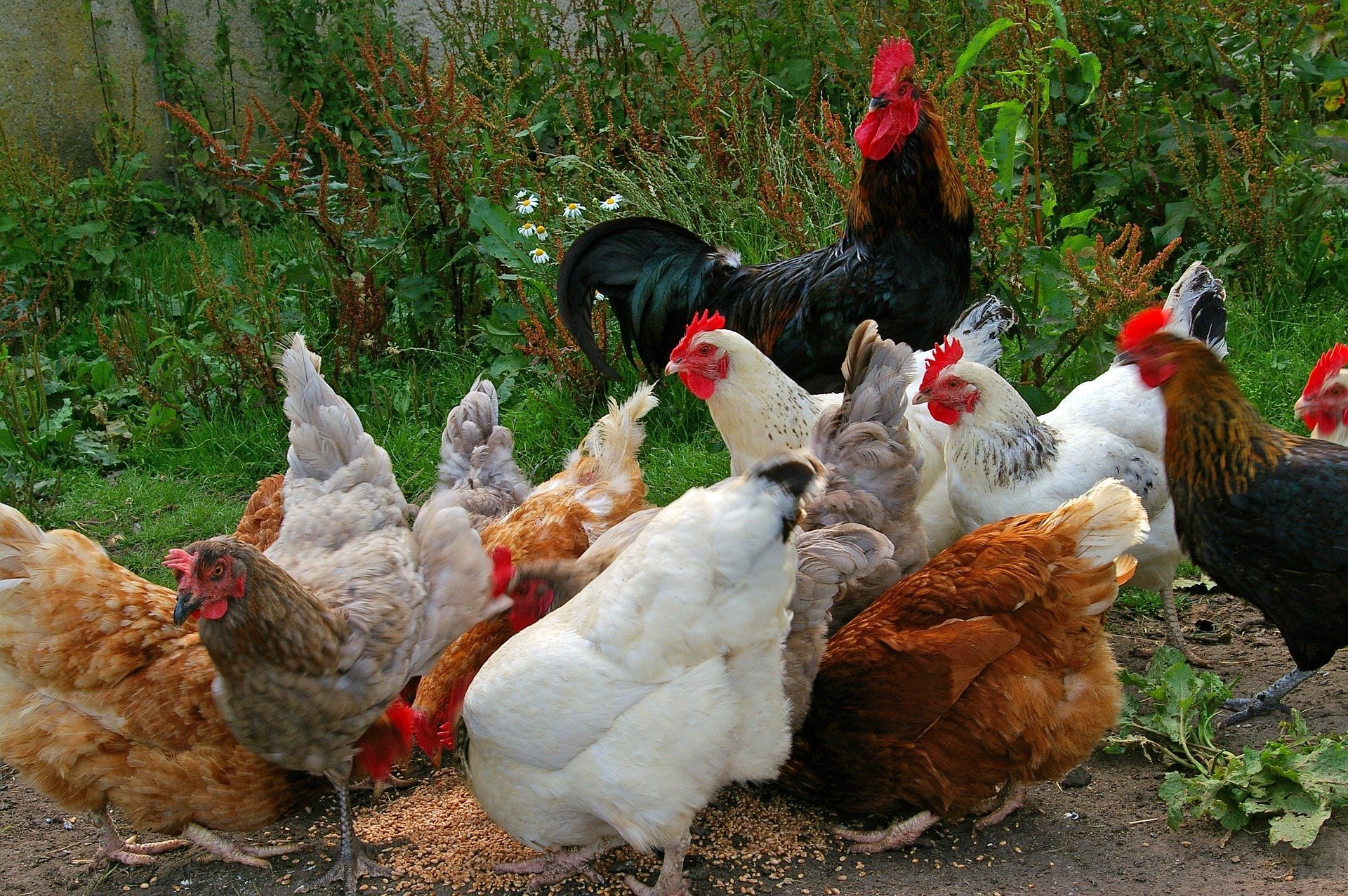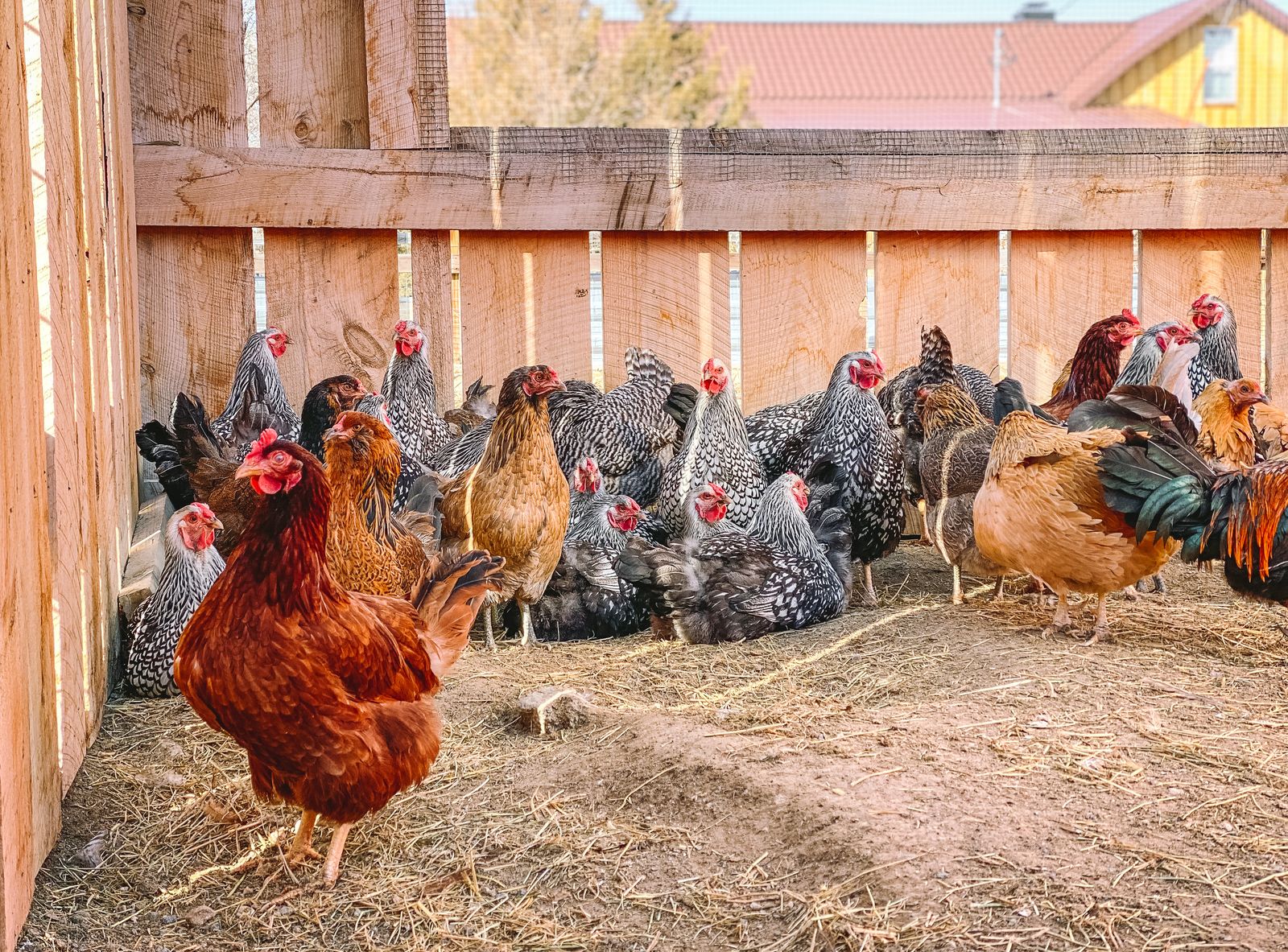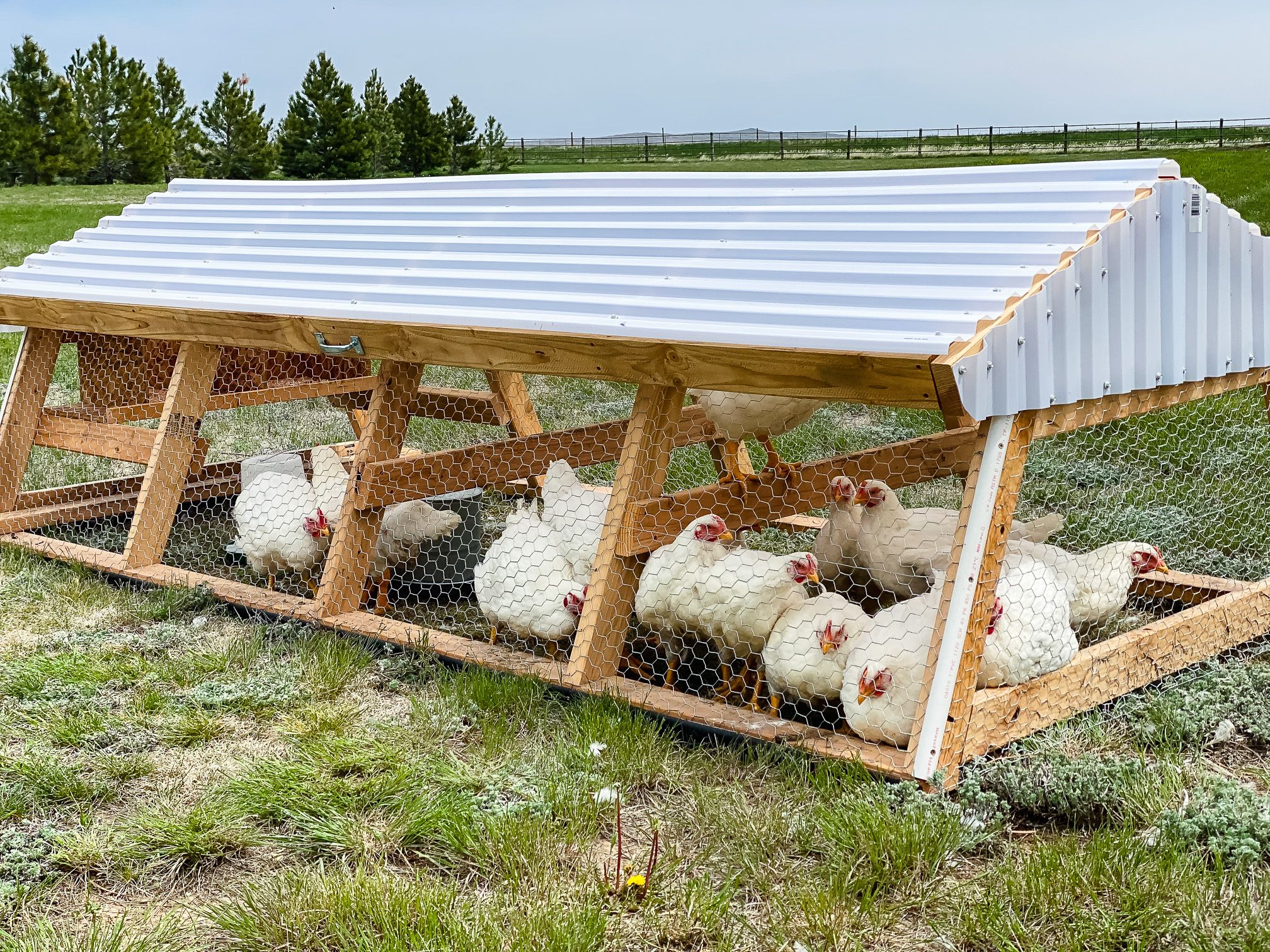Growing chicken feed is an important part of chicken husbandry, as it is a key factor in keeping your chickens healthy and strong. It is also an economical way to provide feed for your chickens. This guide will provide an overview of the basics of growing your own chicken feed, including the types of feed that are best for your chickens, the best methods of growing and storing the feed, and tips for maintaining a healthy flock. With a little bit of time and effort, you can easily grow your own chicken feed and ensure that your chickens are getting the best nutrition possible.
Benefits of Growing Your Own Chicken Feed
- Cost-effective
- Control over Ingredients
- Freshness
- Healthier Chickens
Growing your own chicken feed is a much more cost-effective option than buying commercial feed from a store. This is because you can purchase the ingredients in bulk and save money by not having to pay for the packaging, delivery, and other costs associated with buying commercial feed.
Growing your own chicken feed also gives you complete control over the ingredients that go into your feed. You can choose the best quality ingredients to ensure your chickens are getting the proper nutrition they need. This allows you to tailor the feed to your chickens’ specific dietary needs.
When you grow your own chicken feed, you can be sure that it is always fresh. Commercial feed can be weeks old by the time it reaches the store, which can cause it to be less nutritious. Growing your own chicken feed ensures that your chickens get the freshest and most nutritious feed possible.
Finally, growing your own chicken feed can help to keep your chickens healthier. When you control the ingredients that go into your feed, you can make sure that your chickens are getting the nutrition they need. This can lead to stronger, healthier chickens that are better able to resist disease and infection.
What You Need to Start Growing Your Own Feed

Types of Feed
Growing your own chicken feed requires a bit of knowledge and planning. Before you begin, you should know what kind of feed you want to grow, if any. The most common types of feed are grain, seed, and legume-based.
Grain feed is made up of cereal grains such as corn, wheat, and oats.
Seed feed is made up of small seeds such as sunflower, sesame, and millet.
Legume-based feed is made up of legumes such as peas, beans, and lentils.
Equipment
Once you’ve decided what type of feed to grow, you’ll need to acquire the necessary equipment. This includes a tiller to prepare the soil, seeds to plant, fencing to keep the chickens away, and storage containers to store the feed.
Supplies
In addition to the equipment, you’ll need a few supplies to help you in your chicken husbandry. These include fertilizer to help the crops grow, pesticides to keep pests away, and water to keep the plants hydrated. You may also need tools such as a shovel and rake to help with the planting and harvesting process.
Preparing the Growing Area

Before growing chicken feed, it is important to prepare the growing area. Choose a sunny spot with well-drained soil, and make sure that the ground is free of weeds and debris. Enrich the soil with compost or manure to increase the nutrient content. If possible, create a raised bed to ensure soil drainage and to help warm the soil in cold climates. Create a row of soil mounds, each about 12 inches high, to provide adequate space for the plants to grow.
| Preparation Item | Description |
|---|---|
| Location | Choose a sunny spot with well-drained soil |
| Soil | Remove weeds and debris; enrich soil with compost or manure |
| Raised Bed | If possible, create a raised bed to ensure soil drainage and to help warm the soil in cold climates |
| Mounds | Create a row of soil mounds, each about 12 inches high |
By taking the time to make sure the area is suitable for growing chicken feed, you can ensure that your plants will have the best environment for growth.
Planting the Feed
Growing your own chicken feed is a great way to ensure that your chickens are getting the highest quality nutrition. Here are some tips to get you started:
- Choose the right crop: Research what crops are best suited to your climate and soil conditions. Some crops, such as alfalfa, are more nutrient-rich than others and can provide a better balance of vitamins and minerals for your chickens.
- Prepare the soil: To ensure the best crop growth and health, the soil should be amended with compost and fertilizer before planting. Test the soil to make sure it has the appropriate pH balance for the crop you are planting.
- Plant the seeds: Plant the seeds according to the instructions on the packet. Make sure you space the seeds properly and water regularly.
- Harvest and store: When the crop is ready, harvest it and store it in a cool, dry place. If the crop is wet, dry it before storing to prevent mould.
Growing your own chicken food is a great way to ensure your flock is getting the best possible nutrition. With some planning and preparation, you can grow your own feed and give your chickens the best start in life.
Growing and Harvesting the Feed

Growing your own chicken feed is an economical and sustainable way of providing nutritious food for your chickens. Depending on the type of feed you would like to produce, there are several options for growing your own chicken feed.
Grains
Grains such as wheat, oats, barley, corn, and millet are easy to grow and are a great source of carbohydrates for chickens. To grow grain, plant the seeds in a well-prepared, nutrient-rich soil in the spring. Make sure to keep the soil moist and free of weeds. When the grain is ready to harvest, it should be dried, threshed, and stored in a cool dry place.
Legumes
Legumes like peas, beans, and soybeans provide protein and other essential nutrients to chickens. To grow legumes, plant the seeds in a well-prepared, nutrient-rich soil in the spring. As the plants grow, make sure to water them regularly and keep them free of weeds. When the legumes are ready to harvest, they should be dried and stored in a cool dry place.
Fruits and Vegetables
Fruits and vegetables are also a great source of nutrition for chickens. Fruits such as apples, oranges, and melons can be grown in your backyard. Vegetables such as carrots, squash, and potatoes can also be grown. Make sure to pick the fruits and vegetables when they are ripe and feed them to your chickens fresh.
Herbs
Herbs such as oregano, basil, and thyme are rich in antioxidants and provide many health benefits for chickens. To grow herbs, plant the seeds in a well-prepared, nutrient-rich soil in the spring. Make sure to keep the soil moist and free of weeds. When the herbs are ready to harvest, they should be dried and stored in a cool dry place.
How to Grow Chicken Feed
Growing your own chicken feed is a great way to provide your chickens with a nutritious and sustainable diet. To get started, choose the type of feed you would like to grow, such as grains, legumes, fruits and vegetables, or herbs. Then, plant the seeds in a well-prepared, nutrient-rich soil in the spring. Make sure to water regularly, keep the soil free of weeds, and harvest the feed when it is ready. Once the feed is harvested, it should be dried, threshed, and stored in a cool dry place.
Storing the Feed

Once you have prepared your own feed for your chickens, it is important to store it properly. Improper storage can cause the feed to become stale, moldy, or contaminated.
Store the feed in a cool, dry place such as a shed, garage, or basement. Make sure the area is well-ventilated and away from direct sunlight for optimal freshness. Feed stored in metal containers will last longer than those stored in plastic.
Be sure to also keep the feed away from pests. Rodents, birds, and other animals can contaminate the feed with their feces or saliva and cause illnesses in your chickens. Make sure the containers are sealed tightly and store them in a wire mesh cage or on a high shelf if possible.
Finally, it is important to label the containers with the date the feed was made and the ingredients used. This will help you keep track of the feed’s freshness and quality.
Feeding the Feed to Your Chickens

Chickens require a balanced diet to stay healthy and productive. Feeding your chickens the right feed is a crucial part of chicken husbandry. The feed should be high in protein, minerals, and vitamins. It should also be free of any toxins or contaminants.
Types of Feed
There are several types of feed available for chickens. Each type has its own nutritional value. Commercial feed is the most widely used, but some people choose to create their own feed. This can be done with a combination of grains, legumes, and other food items.
Feeding Frequency
Chickens should be fed twice a day – once in the morning and once in the evening. The amount of feed should be adjusted based on the number of chickens and their individual needs. It’s important to avoid overfeeding or underfeeding.
Storing the Feed
Feed should be stored in a cool, dry place. It should also be kept away from rodents and other pests. Regularly check the feed for signs of spoilage or contamination.
Conclusion
Feeding the right feed to your chickens is essential for their health and productivity. Choose a feed that is high in the right nutrients. Feed the chickens twice a day and make sure to store the feed in the right place. Doing so will help ensure that your chickens stay healthy and productive.
Cleaning the Growing Area
- Remove weeds: Regularly check the growing area and remove any weeds. If the ground is not regularly weeded, weeds can compete with the plants for nutrients and water.
- Clear debris: Remove any debris such as fallen leaves, twigs, paper, or other materials from the growing area.
- Clean tools: Clean any tools used for cultivating the soil such as hoes, rakes, and shovels.
- Mulch: Applying a layer of mulch helps reduce weeds and conserve moisture.
- Fertilize: As needed, fertilize the soil with compost or a commercial fertilizer to ensure healthy plant growth.
Cleaning the growing area is an essential part of growing your own chicken feed. Keeping the area weed-free, debris-free, and fertilized helps ensure healthy and productive plants. Additionally, it prevents weeds from competing with the plants for nutrients and water. Regularly inspecting the area and removing any weeds, debris, or other materials that can inhibit plant growth is key to successful chicken feed production. Tools used for cultivating the soil should also be kept clean and in good condition. Finally, applying a layer of mulch helps reduce weeds and conserve moisture.
Frequently Asked Questions
What are the Most Common Ingredients for Making Chicken Feed?
The most common ingredients for making chicken feed are grains, such as wheat, barley, oats, and corn; seeds, like sunflower and safflower; and legumes, such as soybeans and peas. Additionally, some chicken feed may contain additional ingredients such as fish meal, animal fats, and vitamins and minerals. It’s important to provide a balanced diet for chickens, so it’s best to consult a veterinarian or nutritionist to determine the best feed for your flock.
What nutritional benefits does chicken feed provide for chickens?
- Protein: Protein is essential for chickens, as it helps them grow and maintain healthy bodyweight. Protein can come from a variety of sources, including grains, legumes, and other animal sources.
- Vitamins and Minerals: Vitamin A, B-Complex vitamins, and minerals such as calcium, phosphorus, and magnesium are essential for a chicken’s health. These are typically found in commercial chicken feed, but can also be supplemented through natural sources such as fresh fruits and vegetables.
- Fats and Oils: Fats and oils provide energy and essential fatty acids that chickens need to stay healthy. These can be found in some commercial feeds but can also be supplemented through natural sources such as sunflower seeds, nuts, and fish oils.
- Fiber: Fiber helps chickens digest their food more efficiently, and can be found in grains, legumes, and other plant sources.
Commercial feed is designed to provide chickens with the optimal balance of these essential nutrients. When supplemented with other natural sources, such as fresh fruits and vegetables, chickens can get all the nutrients they need to stay healthy and productive.
How Much Feed Should I Give My Chickens?
- Chickens need 1/4-1/2 lbs of feed per day per bird. The amount of feed you give your chickens should be adjusted according to their age, breed, and activity level.
- For younger birds, give them 1/4-1/3 lbs of feed per day. As they get older, gradually increase their feed to the full 1/2 lbs allowance.
- If you are raising a breed of chicken that is particularly active, such as a running breed, you may need to give them more feed to keep up with their activity level.
- If you are raising breeds of chickens that are less active, such as a meat breed or a laying breed, you may need to give them less feed to prevent them from becoming overweight.
- To make sure your chickens are getting enough feed, weigh the feed dish each day and adjust the amount of feed accordingly.
How Often Should I Change My Chickens’ Feed?
Feed Type: Generally, different types of feed should be changed at different intervals.
- Grain-based feed should be changed every 3-4 days.
- Pellet-based feed should be changed every 4-5 days.
- Mash-based feed should be changed every 5-7 days.
Season: Depending on the season, feed may need to be changed more or less frequently.
- During the summer, feed should be changed more often to prevent spoilage from the heat.
- During the winter, feed should be changed less often to prevent wasting food.
Amount of Food: The amount of food provided to your chickens should also be taken into consideration.
- If you are providing your chickens with a large amount of food, it should be changed more often.
- If you are providing your chickens with a small amount of food, it should be changed less often.
What are some tips for storing homemade chicken feed?
1. Keep it Dry: Store the feed in a dry, cool place to prevent mold and spoilage.
2. Store in an Airtight Container: Use airtight containers to keep moisture and insects out.
3. Use Food Grade Containers: Be sure to use food grade containers to ensure the feed is safe for your chickens.
4. Label and Date: Label the feed with the date it was made, so you know when to use it.
5. Monitor Temperature: Keep an eye on the temperature of the area where the feed is stored. High temperatures can cause feed to spoil quickly.
Conclusion
Growing your own chicken feed is a great way to ensure that you are providing your chickens with the best nutrition. It is also cost-effective and environmentally friendly. With a little planning and preparation, you can provide your chickens with a healthy and balanced diet that will keep them healthy and happy.
References
- Growing Your Own Feed – University of Minnesota Extension
- Feeds and Feeding Practices – Food and Agriculture Organization of the United Nations
- Poultry Fodder Crops for Home Use – United States Department of Agriculture Animal and Plant Health Inspection Service
